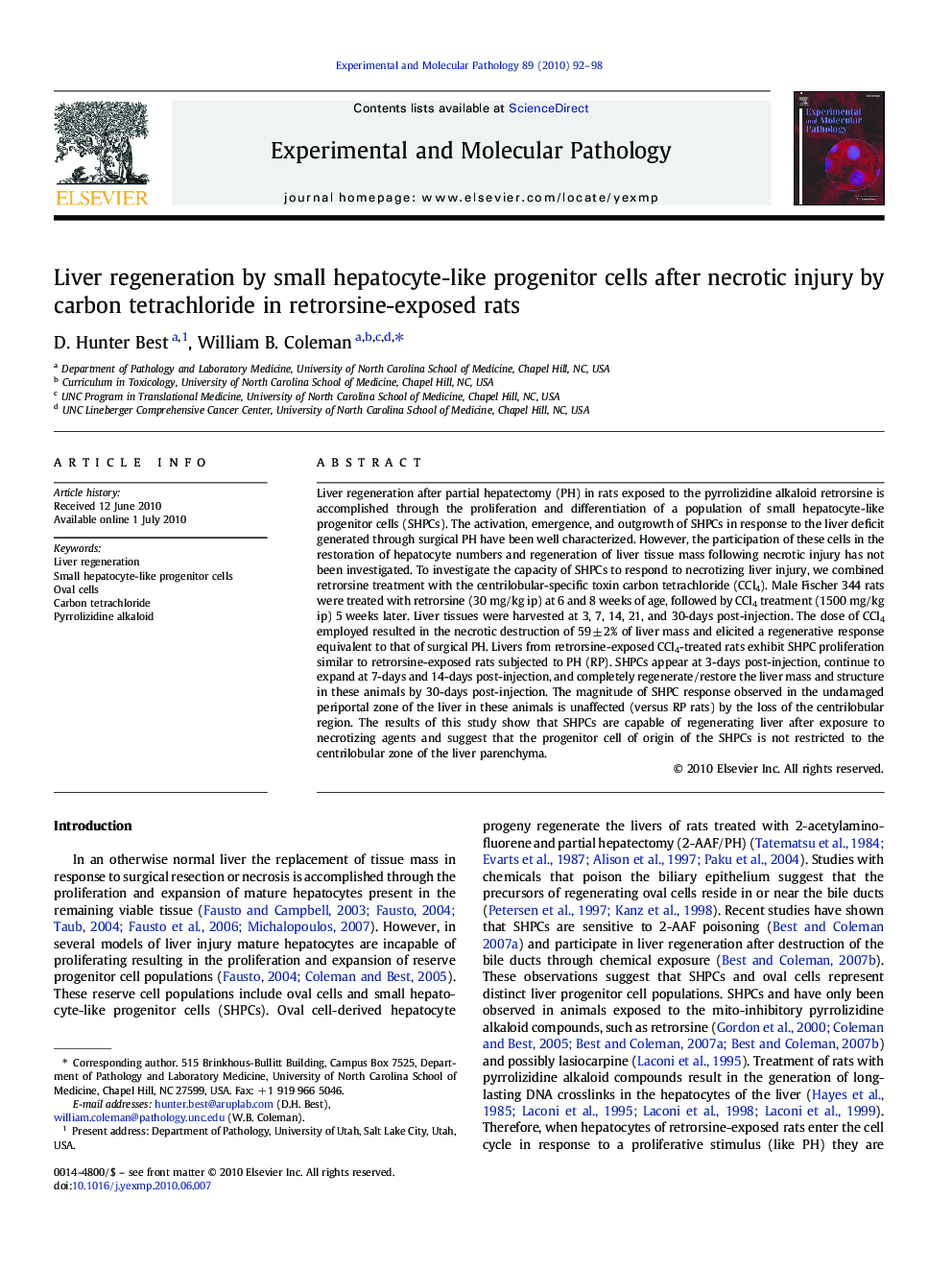| کد مقاله | کد نشریه | سال انتشار | مقاله انگلیسی | نسخه تمام متن |
|---|---|---|---|---|
| 2775649 | 1152337 | 2010 | 7 صفحه PDF | دانلود رایگان |

Liver regeneration after partial hepatectomy (PH) in rats exposed to the pyrrolizidine alkaloid retrorsine is accomplished through the proliferation and differentiation of a population of small hepatocyte-like progenitor cells (SHPCs). The activation, emergence, and outgrowth of SHPCs in response to the liver deficit generated through surgical PH have been well characterized. However, the participation of these cells in the restoration of hepatocyte numbers and regeneration of liver tissue mass following necrotic injury has not been investigated. To investigate the capacity of SHPCs to respond to necrotizing liver injury, we combined retrorsine treatment with the centrilobular-specific toxin carbon tetrachloride (CCl4). Male Fischer 344 rats were treated with retrorsine (30 mg/kg ip) at 6 and 8 weeks of age, followed by CCl4 treatment (1500 mg/kg ip) 5 weeks later. Liver tissues were harvested at 3, 7, 14, 21, and 30-days post-injection. The dose of CCl4 employed resulted in the necrotic destruction of 59 ± 2% of liver mass and elicited a regenerative response equivalent to that of surgical PH. Livers from retrorsine-exposed CCl4-treated rats exhibit SHPC proliferation similar to retrorsine-exposed rats subjected to PH (RP). SHPCs appear at 3-days post-injection, continue to expand at 7-days and 14-days post-injection, and completely regenerate/restore the liver mass and structure in these animals by 30-days post-injection. The magnitude of SHPC response observed in the undamaged periportal zone of the liver in these animals is unaffected (versus RP rats) by the loss of the centrilobular region. The results of this study show that SHPCs are capable of regenerating liver after exposure to necrotizing agents and suggest that the progenitor cell of origin of the SHPCs is not restricted to the centrilobular zone of the liver parenchyma.
Journal: Experimental and Molecular Pathology - Volume 89, Issue 2, October 2010, Pages 92–98